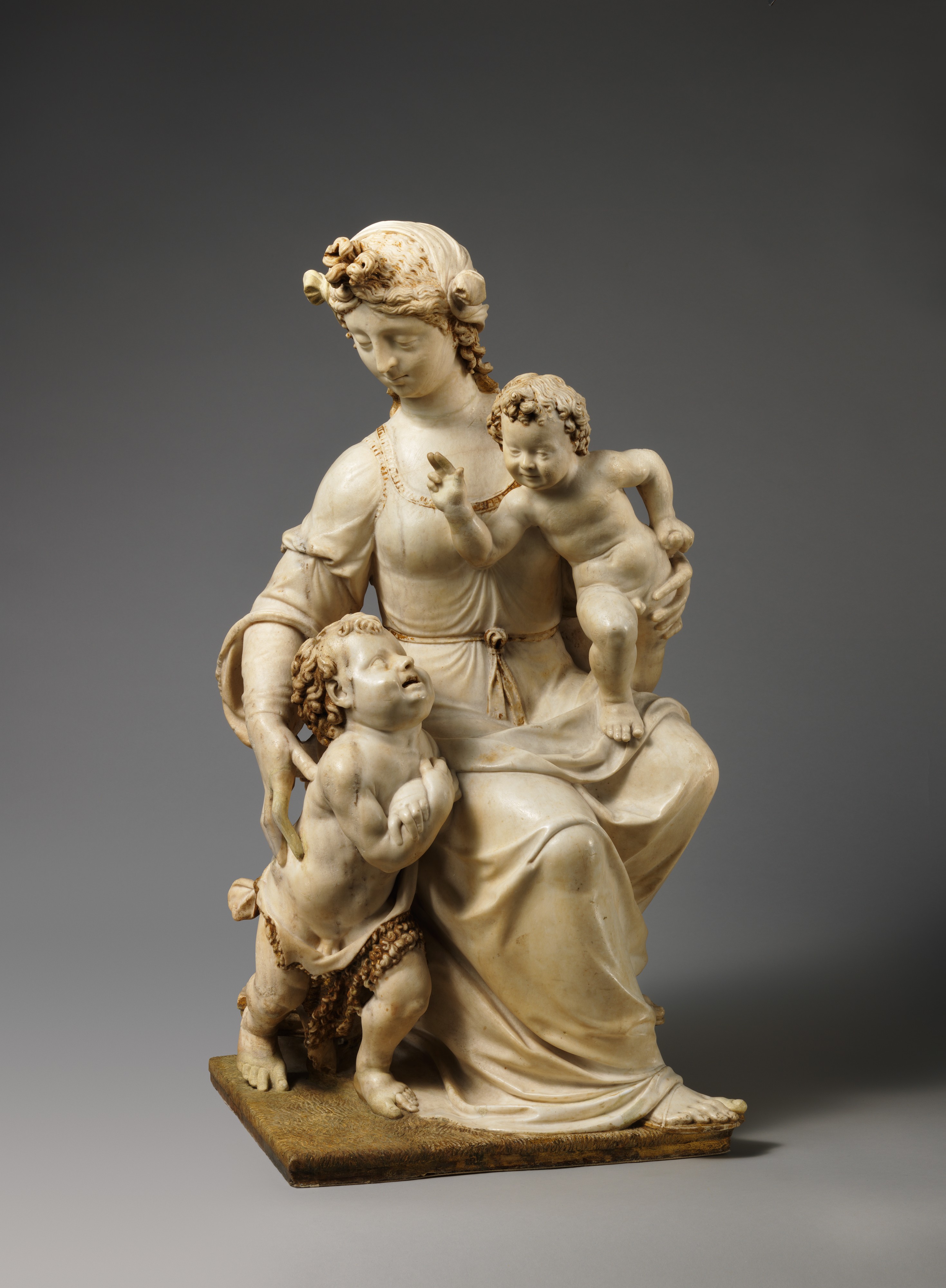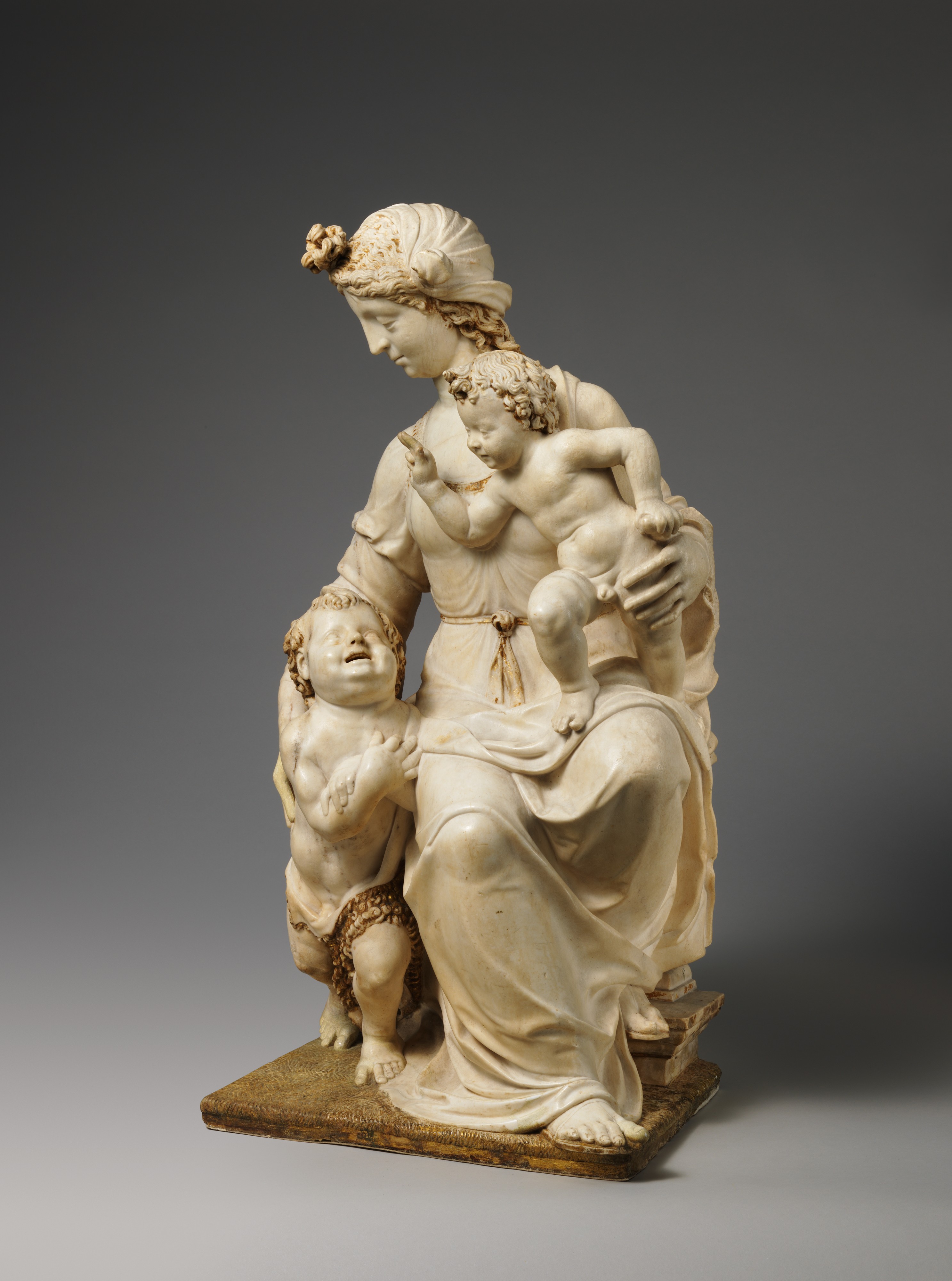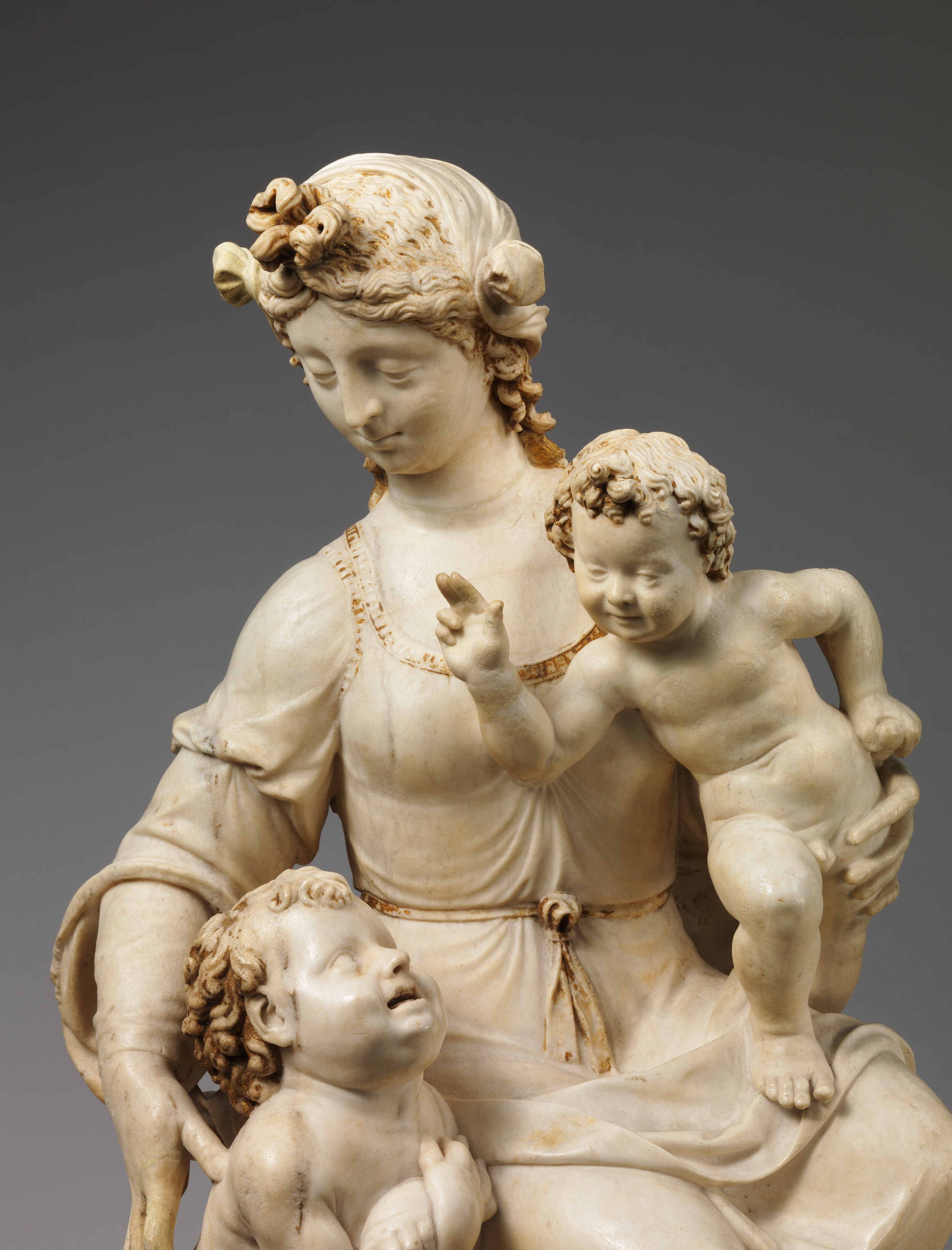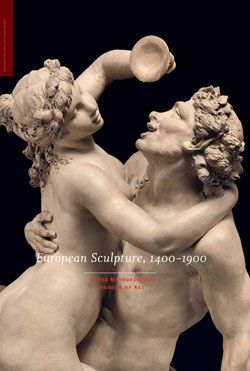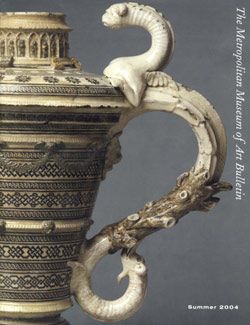Virgin and Child with the Young Saint John the Baptist
Northern French, Île-de-France (?)
Not on view
Carved in France, this graceful image is rooted in Italian Renaissance compositions. Leonardo da Vinci’s painting known as the Virgin of the Rocks and Raphael’s La Belle Jardinière (both Musée du Louvre, Paris) were models for the integration of these three holy figures into a compact, pyramidal format. Since both paintings belonged to King Francis I (1494 – 1547), it is not surprising that French sculptors emulated their famed designs. The subject was more popular in Italy than in France in the sixteenth century, so few exemplars were available north of the Alps.[1]
Italian, Flemish, and native French artists worked at the French court and around the Île-de-France in the first half of the sixteenth century; the character of this marble sculpture reflects that international mix. If the group owes its design to Italian precedent, its sweet demeanor and elegant gestures reflect the French manner. Placing it firmly within a particular atelier, however, is problematic because the era was one in which artists moved frequently across regions and borders. Some scholars link it to work in the Loire-valley town of Tours, but there is little basis for that attribution.[2] A stylistic point of departure is offered by the four virtues seated on the corners of the tomb of Louis XII (1462 – 1515) and Anne of Brittany in the cathedral of Saint-Denis, north of Paris.[3] Carved by the Italians Jean Juste and his brothers between 1515 and 1531, these calm, contained figures covered with broad swaths of drapery represent a fundamental model for our marble. They share aspects of the style of several sculptors whose work followed the Justes’. An atelier traditionally known as that of Saint-Léger, named for a town south of Troyes in the Champagne region, took a similar approach in the relative simplicity and gravity of their figures, the precision of their details, and the broad folds of their drapery. A Virgin and Child in the Musée National de la Renaissance, Château d’Écouen, dating to about 1530, one of the finest works of the Saint-Léger atelier, is a good example of the oval facial type and contained body movements and gestures characteristic of that school of sculptors.[4] By comparison with that work, the Virgin and Child with the Young Saint John the Baptist is more complex, as the bodies are positioned in depth and more emphatic in their movement.
From the evidence of this marble, the sculptor of our group had a penchant for such details as the Virgin’s topknot of hair, which is echoed by similar knots at either side of her kerchief and at her waist, the crinkled ribbon hemming her bodice, and the fur of John the Baptist’s animal-skin coat. Such love of specificity is a Flemish trait and reminiscent of a dynasty of sculptors, the Juliots, who worked at the Château de Fontainebleau in the sixteenth century and were based in and around Troyes. But their productions are even more richly detailed in costume accessories than the Museum’s sculpture; moreover, the faces of their figures incline to caricature and the bodies have a more frenetic sense of movement.[5] In the final analysis, this exceptionally accomplished work may be said to reflect trends in French sculpture stemming from royal ateliers and spreading to regions near the Île-de-France, but it cannot yet be firmly associated with a particular atelier.
[Ian Wardropper. European Sculpture, 1400–1900, In the Metropolitan Museum of Art. New York, 2011, no. 20, pp. 68–70.]
Footnotes:
Note: See Provenance: Jean-René Gaborit, Musée du Louvre, Paris, to Olga Raggio, March 28, 2000, letter in the curatorial files of the Department of European Sculpture and Decorative Arts, Metropolitan Museum.
[1] See Janet Cox-Rearick. The Collection of Francis I: Royal Treasures. New York and Antwerp, 1996, pp. 140 – 43, no. iv-1, pp. 179 – 81, no. v-11.
[2] John Goldsmith Phillips. "Sculpture: Sacred and Profane." Metropolitan Museum of Art Bulletin, n.s., 20, no. 7 (March 1962), pp. 213–20, p. 216, was the first to label this as "French (possibly Touraine), about 1530." In the spring of 1986, Jean Guillaume, then professor at the Centre d’Études Supérieurs de la Renaissance, Tours, examined the sculpture and doubted that it was from Tours, thinking Troyes more likely.
[3] Philippe Sénéchal. "Jean Second à Sant-Denis: Les Tombeaux de Charles VIII et de Louis XII en 1532." Revue de l’art, no. 99 (1993), pp. 74–79.
[4] Maxence Hermant in Le Beau XVIe: Chefs-d’oeuvre de la sculpture en Champagne. Exh. cat. Église Saint-Jean-au-Marché, Troyes; 2009. Paris and Troyes, 2009, pp. 252 – 53, no. 13; Véronique Boucherat. "Nicolas Halins et le prétendu atelier de Sanit-Léger." In Le Beau XVIe 2009, pp. 174–81, pp. 179 – 81, figs. 140 – 43.
[5] See Marion Boudon-Machuel. "Les Juliot." In Le Beau XVIe 2009, pp. 194–99.
Due to rights restrictions, this image cannot be enlarged, viewed at full screen, or downloaded.
This artwork is meant to be viewed from right to left. Scroll left to view more.


